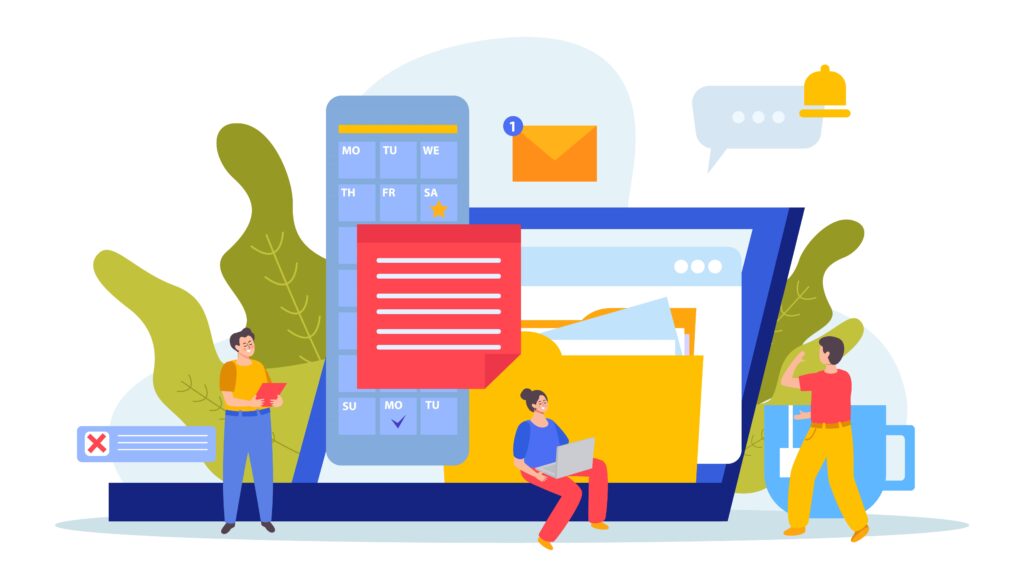Libraries have been central to human knowledge for centuries, offering an organized collection of books, journals, and other resources for research, learning, and leisure. In today’s digital age, libraries are evolving, embracing technology to keep up with the increasing demand for efficiency, accessibility, and resource management. At the heart of this transformation is the Library Management System, a powerful tool designed to streamline and simplify the many complex operations involved in running a library.
In this article, we’ll take a deep dive into what a Library Management System is, why it’s important, and how it’s used. By the end, you’ll have a solid understanding of how these systems enhance library operations and the experience for both staff and patrons alike.
What Is a Library Management System?
A Library Management System is software designed to manage all the functions of a library. Whether it’s tracking books and other materials, managing memberships, handling check-outs and returns, or generating reports, an LMS integrates everything into a single, user-friendly platform. The ultimate goal is to improve efficiency by reducing manual labor, streamlining processes, and allowing users easy access to the library’s resources.
Library Management Solutions come in different forms, from standalone systems for small libraries to enterprise-level systems for large institutions. They offer features like catalog management, circulation management, acquisition, member management, and more.
Key Components of a Library Management Systems
Catalog Management – The digital equivalent of a library’s card catalog, this function allows users to search for books, journals, media, and other resources. It usually supports advanced search filters, and categorization by genres, authors, and topics.
Circulation Management – This module handles book loans, returns, renewals, and reservations. It helps track which items are in circulation and which are available, allowing both the library and its users to manage resources effectively.
Acquisition and Inventory – Every library needs to manage acquisitions (adding new materials) and maintaining an accurate inventory. This module helps you track new purchases, donations, and other acquisitions while ensuring that all items are correctly inventoried.
Member Management – Libraries serve members, and the LMS keeps track of membership details, fines, borrowing history, and communication with patrons. Whether it’s sending due date reminders or promotional emails about upcoming events, the Library Management System simplifies member interactions.
Reports and Analytics – To run efficiently, libraries need data. This feature provides detailed reports on circulation, member activity, inventory status, and more, helping you make informed decisions based on real-time information.
Why Is a Library Management Systems Important?
Now that you know what an LMS is, let’s talk about why it’s such a valuable asset for libraries. If you’re managing a library—or even just a member—you’ve likely seen the complications that come with manually tracking resources, memberships, and loans. The bigger the library, the more cumbersome these tasks can become.
Here are some compelling reasons why libraries—large and small—need a Library Management System:
1. Increased Efficiency
With an LMS, routine tasks like cataloging books, managing loans, and tracking returns are automated. Imagine eliminating the need for manually updating card catalogs or spreadsheets each time a book is checked out. The Library Management Software handles these tasks instantly, reducing human error and freeing up staff to focus on more complex tasks.
For example, if a patron wants to renew a book, they don’t have to call or visit the library; they can easily log into the system and renew the book themselves, saving both their time and the staff’s.
2. Improved Patron Experience
Today’s users expect technology-driven solutions, and libraries are no exception. Library Management Software allows patrons to check availability, reserve items, or renew loans from anywhere—be it on their mobile phones or computers. The system offers 24/7 access to the library’s resources, making it convenient for users to engage with the library outside traditional operating hours.
3. Better Resource Management
An LMS ensures that every book, journal, or media item is tracked accurately. You won’t have to worry about lost books or discrepancies in your inventory. These systems notify you when a resource is overdue, automatically imposing fines or notifying the patron for returns. You also get insights into which materials are in high demand and which ones aren’t getting much attention—helping you make better acquisition decisions.
4. Comprehensive Reporting
Whether you’re trying to justify funding, measure performance, or simply want to understand how the library is being used, a good Library Management Platform offers a variety of reporting options. Reports might show you which books are checked out the most, who your most active members are, or how your acquisitions are distributed across genres and subjects. This data is invaluable for making strategic decisions.
5. Enhanced Collaboration
In larger institutions, Library Management Systems can integrate with other departments, allowing collaboration across teams. For example, university libraries may share their LMS with the academic departments, which can suggest books or make acquisitions based on course syllabi. Some systems even offer integration with external databases, giving users access to a broader range of resources beyond what the library physically owns.
Practical Example: How an LMS Works in Real Life
To better understand the value of a Library Management System, let’s consider a practical example. Imagine you’re managing a mid-sized public library that serves a diverse community of about 5,000 members.
Scenario 1: A Patron Searching for a Book
Jane is a regular patron who wants to find a particular book on urban gardening. Instead of walking to the library and sifting through the shelves, she logs into the library’s LMS from home, types in the search query, and gets an instant result. The Library Management System shows her whether the book is available and on which shelf it’s located. If it’s currently checked out, the system will even let her place a hold on the book, automatically notifying her when it’s returned.
Scenario 2: Library Staff Processing Returns
The next morning, John, another patron, returns a stack of books. Using the Library Management System, the librarian simply scans the book barcodes, and the system instantly updates the library’s catalog, making those books available for the next user. There’s no need for manual data entry or delays. If John owes late fees, the system automatically calculates the amount and sends him an invoice via email.
Scenario 3: Data-Driven Acquisitions
The library is planning to buy new materials for the upcoming year. The Library Management System generates a report on which books are most popular and which genres are most in-demand. Using this data, the library can make informed decisions about what types of materials to prioritize, ensuring they are spending their budget on resources that patrons actually want.
Modern Features of Library Management System Software
As libraries evolve, so do Library Management Systems. Many solutions today offer advanced features that go beyond the basics of cataloging and circulation. Here are some modern features you might find in contemporary systems:
1. Digital Resource Management
With the rise of eBooks, audiobooks, and online journals, libraries aren’t limited to physical materials anymore. Many Library Management Solutions now include digital resource management capabilities, allowing patrons to borrow eBooks or access online databases without stepping foot inside the library.
2. Mobile Apps
Convenience is key in today’s fast-paced world. Many Library Management Solution Providers offer mobile apps, giving patrons access to their accounts, book catalogs, and renewals from the palm of their hands. This feature can also support barcode scanning, allowing patrons to use their phones as digital library cards.
3. Self-Checkouts
Self-checkout systems, similar to what you see in retail stores, are becoming increasingly popular in libraries. Using an LMS-enabled kiosk, patrons can check out books without waiting for assistance from staff. It’s fast, efficient, and enhances the user experience.
4. Cloud-Based Solutions
Gone are the days when libraries needed to install bulky software on local machines. Cloud-based Library Management Solutions offer all the benefits of traditional systems without the need for complicated IT setups. With cloud-based software, updates are handled automatically, and libraries can access their systems from anywhere with an internet connection.
Challenges in Implementing a Library Management Solutions
Despite the clear benefits, adopting a Library Management System isn’t without its challenges. It’s important to be aware of these potential hurdles to ensure a smooth implementation:
1. Cost
Implementing an LMS can be expensive, especially for smaller libraries with limited budgets. You’ll need to consider not only the initial software cost but also ongoing maintenance, updates, and training for staff.
2. Training and Adoption
Even the best system won’t be effective if your team doesn’t know how to use it. Implementing an Library Management System requires time and resources for training, ensuring that both staff and patrons are comfortable with the new technology.
3. Data Migration
If your library is transitioning from a manual system or an outdated software solution, migrating data can be a complex task. You’ll need to ensure that all catalog data, member information, and circulation history are transferred accurately without any loss of information.
The Future of Library Management
As technology continues to advance, Library Management Systems will likely continue to evolve as well. The future of Library Management System may include:
1. Artificial Intelligence Integration
AI could help automate even more tasks, from chatbots that assist patrons to predictive analytics that help libraries make smarter acquisition decisions. Imagine an AI-powered system that automatically suggests books based on a patron’s borrowing history.
2. Virtual and Augmented Reality
With the rise of VR and AR, future library experiences might include virtual tours of libraries, digital storytelling experiences, or augmented reality guides that help users locate books within the library.
3. Blockchain for Copyright Management
As digital resources become more prevalent, blockchain technology may play a role in managing digital rights and ensuring authors and creators are fairly compensated for their work.
Conclusion: The Heart of Modern Libraries
A Library Management System is the beating heart of any modern library. It enables efficiency, improves the user experience, and helps libraries stay relevant in an increasingly digital world. Whether you’re managing a small public library or a massive university archive, an LMS is an essential tool that can help you meet the needs of today’s patrons while preparing for tomorrow’s challenges.
By implementing a robust Library Management System, you’re not just making your library more efficient—you’re making it a more accessible, dynamic resource for everyone in your community.





